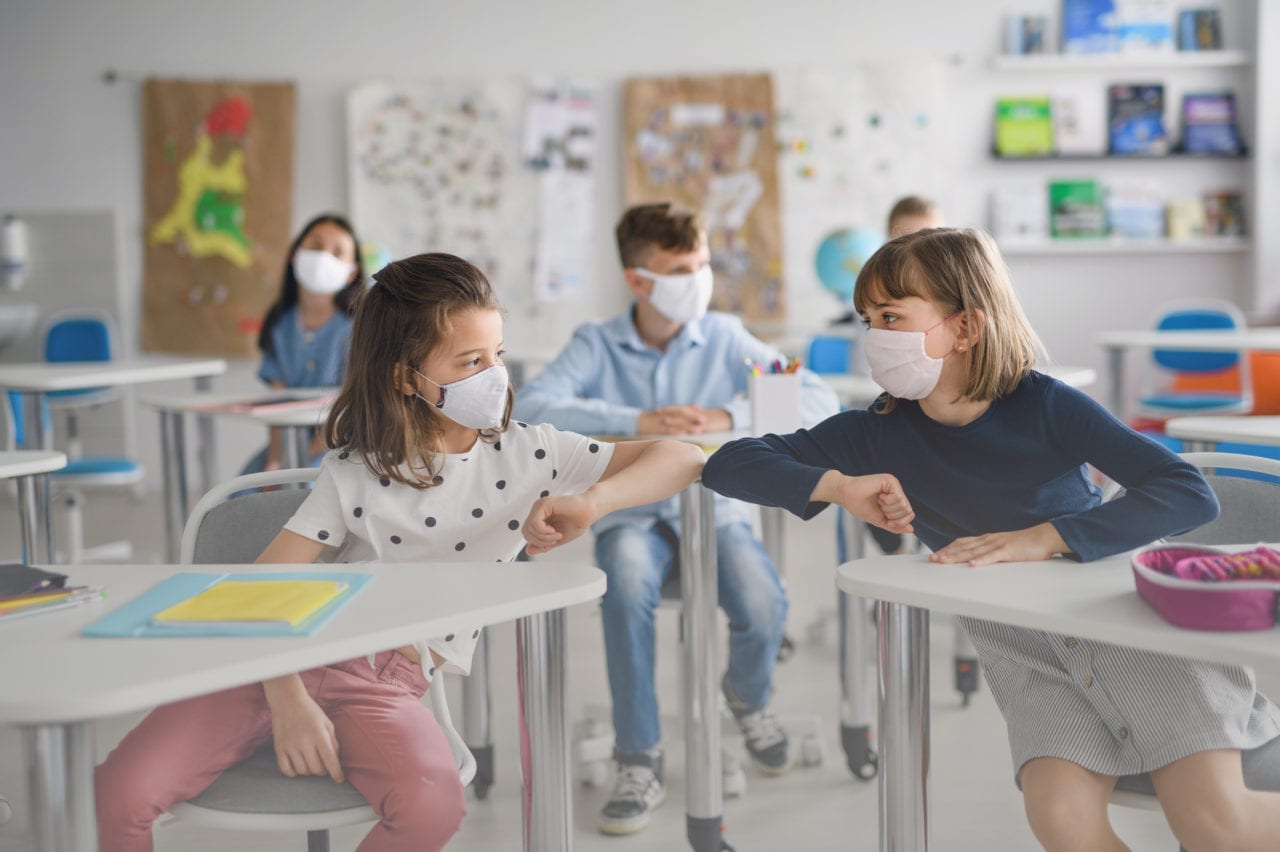
Can little kids really social distance?
Lessons from child care centers that have stayed open during the pandemic, and why it might not work in schools.

By Claire Hao | Chicago Tribune
Aug 17, 2020 | 5:00 AM
Read the original story on Chicago Tribune here: https://www.chicagotribune.com/coronavirus/ct-covid-19-school-day-care-social-distancing-20200817-q26vkn4hbjghneq7cxjqjzwj4m-story.html
Earlier this summer, when Chicago Public Schools still planned to reopen in September, Chicago’s top public health official said even elementary-age children are capable of following measures to fight the spread of COVID-19, such as social distancing and wearing face masks.
“I have nieces and nephews this age, and when you model this behavior for children and set it as an expectation, they actually do very well with it in my experience,” Dr. Allison Arwady, commissioner of the city’s Public Health Department, said at a July news conference.
Some parents and teachers — otherwise the biggest believers in their kids and students — were less optimistic. They said social distancing goes against the very nature of very young children.
“I love my kids. They’ve got a lot of strengths, but social distancing is not one of them,” said Angie Gazdziak, a Chicago parent of two young children.
If her 4-year-old son wears a mask in the first place, “we’re lucky to get 10 or 15 minutes with him wearing it before he takes it off, saying it bothers his ears, or his nose, or his chin,” Gazdziak said. “There’s always something. There’s always a reason he has to take it off.”
Shavonne Gillette, a prekindergarten teacher at Burnham Anthony Elementary School, said that even pre-pandemic, it was a challenge to get her 3- and 4-year-old students to keep their hands germ-free.
“We have to constantly remind them to cover their sneezes, use their elbows, to wash their hands,” she said in an interview prior to CPS’ change of plans. “Even sometimes when they go use the bathroom, they will come out and try to go back and play. And we have to be like ‘No, wash your hands.”
Although CPS has since reverted to all remote learning at least until November, the decision will undoubtedly send more Chicago children into day care or other group settings, and many private and suburban schools still intend to open their doors. CPS leaders have also said it’s likely schools will reopen before a vaccine is developed and completely rolled out.
So the question still remains: Even if kids sometimes slip up in following public health guidelines, how can we keep them safe?
Carole Robertson Center for Learning has been asking that question ever since the nonprofit closed in March. And it has some answers, having reopened its Little Village and Lawndale locations in late June for the families of essential workers, serving about 140 children at each center.
The centers’ employees have found that children — particularly those younger than 7 — do need to be encouraged to wash their hands, maintain distance, and wear a mask, said Sonja Crum Knight, vice president of programs.
But the center puts more emphasis on making sure adults are following proper protocols, such as regular cleaning throughout the day and health screenings at the door.
“What you have to focus on for children is making sure they come back to that safety and comfort and the mitigation is the back office that they don’t see,” Knight said.
Knight emphasized that kids going back into child care centers or other places of learning should not be met by fear. Instead, she said, children of all ages will be better at sticking to public health guidelines if they are reinforced for doing well and are told why these actions are necessary.
South Loop Montessori School, which has been open since April to provide child care services to essential workers, has about 160 kids enrolled right now, said executive director Mahdi Dadrass. Children are seated at their own desks spaced at least 6 feet apart working on individualized lesson plans, with teachers nearby.
“And let’s say a child were to wander off of their individualized workspace and maybe encroach on somebody else’s workspace. There’s a teacher there to help guide them back to where they were,” Dadrass said.
There is one teacher for every four students for the day care’s youngest children, Dadrass said. The highest student-to-teacher ratio for older elementary-age children is still less than 7 to 1.
South Loop Montessori classrooms average 1,200 square feet, Dadrass said.
In CPS — where many classrooms are considerably smaller — administrators had planned to group students in “pods” of 15 that would have rotated into schools two days a week. But Mayor Lori Lightfoot and district officials decided to move online because current COVID-19 conditions would not allow the district “to reopen schools in a safe and responsible manner given the sheer number of people we serve every day,” according to an email to parents. Knight agreed, noting that child care centers are “much smaller ecosystems.”
But even at schools without the same resources or infrastructure at hand, Dadrass said he thinks his day care’s adherence to social distancing and other health protocols could be scaled up at public schools.
“I think a lot of compromises are going to have to be made in the public sector to make those numbers work, and a lot more design and thought on how children are avoiding comingling while moving about the school,” Dadrass said. “But, yes, it can be scaled up with proper planning and budget.”
However, Knight said she is “deeply worried about the association” between schools and child care centers, which she said is a false comparison. Her center does not add additional pressure on children already trying to follow health guidelines by grading them or preparing them for standardized exams.
“By virtue of the size and the fact that you have to address all these developmental levels in terms of your approach makes opening a school as quickly as had been suggested very dangerous,” Knight said.
Another way in which the Carole Robertson centers and South Loop Montessori are different from many public schools is that classrooms have their own bathrooms.
Children are dropped off to both child care centers individually by their parents with health screenings and check-in at the door.
“We have enough staff on hand to conduct the screening, not just of families but also of our employees, so what does that look like in an elementary school building?” Knight said. “And many of our teachers are actually greeters, help children wash their hands, walk them to their classroom.”
With pandemic showing few signs of slowing, Gazdziak said her children have adapted to new ways of learning and seeing their friends, even if they don’t like it. Whether at home, in schools or at day care this fall, she said she trusts kids can be resilient.
“I think they’re all counting on the adults in the room to help see them through it,” Gazdziak said. “It’s certainly not going to come without some emotional baggage. … Are they going to feel comfortable hugging people again in a year or two?”


